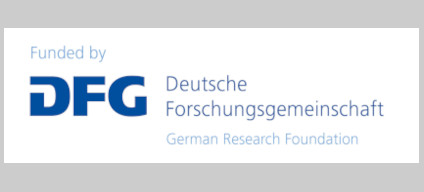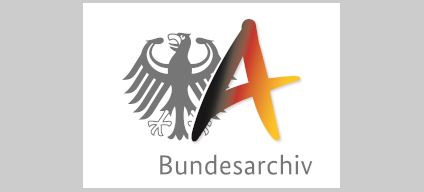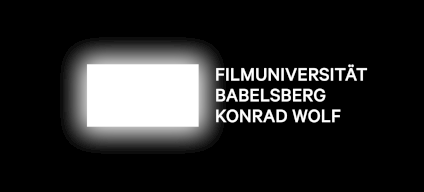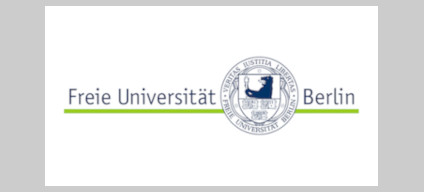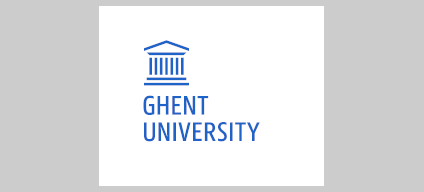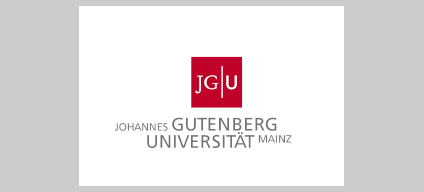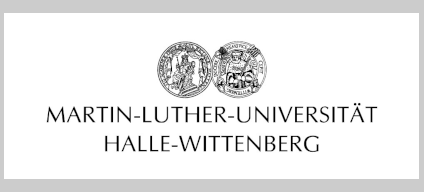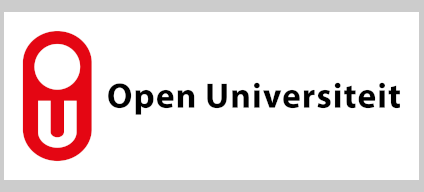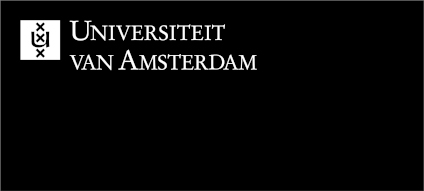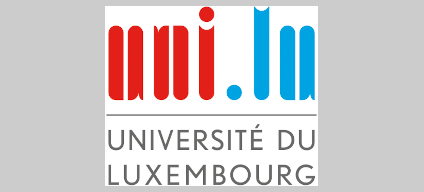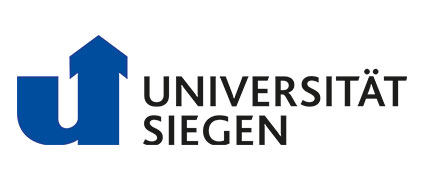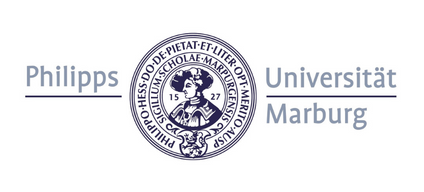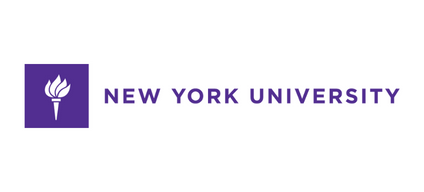Main Content
Book of Abstracts
Opening Keynote
New Knowledge and the Digitization of Everything
Jane Gaines (Columbia University)
A review of the current debates around Digital Humanities from the perspective of the methodological transition from paper documents and photochemical prints to the digitization of materials and the computerization of historical investigation. Since this is the moment in which Lev Manovich uses the term “analytics” to describe computational processes we are confronted with what it means to intellectually engage differently. Thus I take up the question not only of knowledge “acquisition” but of assumptions about knowledge as produced by machines.
Panel 1: Digital Objects and Critical Perspectives
Framing Film Historic Influencer/s: Migrating Images between Restoration Ethics and Digital Media Culture (canceled)
Franziska Heller (Martin Luther University of Halle-Wittenberg), Uli Rüdel (HTW Berlin)
This presentation is based on a recent new co-teaching project on media history and digital film restoration commenced between the BA program for conservation and restoration of audiovisual heritage at HTW Berlin and the MA program for Media and Communication Studies at Martin-Luther-University Halle-Wittenberg. Digitisation and digital film restoration are preconditions for pursuing film historic projects in the digital realm, but they do not occur in a sociocultural vacuum. The article poses various questions, including: how do we convey this pivotal role of film restoration as digital restoration of a material, photo-chemical cultural heritage to digital natives? How do not only the professional exchange, but also popular platforms such as YouTube, Twitter, Facebook reinforce forms of historiographic discourses? In short, the contribution focuses on an oft-neglected aspect, i.e. the preconditions of archival moving images migrating into the digital realm.
The Digitization of Silent Films and the Teaching of Film Historiography: Entanglements and Opportunities
Casper Tybjerg (University of Copenhagen)
My presentation will reflect on my participation in a program at the University of Copenhagen devoted to the integration of research into teaching. I teach a methods seminar on the first year of the MA program in Film and Media Studies, where I have tried to integrate my research on Danish silent cinema. I have encouraged students to work with the website www.stumfilm.dk, where the Danish Film Institute (DFI) has made and continues to make available a great trove of material on the Danish silent cinema: all extant Danish silent fiction films are being digitized and made available, along with many related archival documents. The process has caused me to reflect in a new way on the relation between research material and research questions. Textbooks on empirical methodologies tend to insist on the primacy of research question: only when RQs have been formulated should researchers begin to gather their data. Historians, however, often begin with the archive, immersing themselves in documents, and only later formulate a research question based on what they discover. It found that I needed to present the historians’ immersion-first approach more explicitly as a well-established procedure, but also to think more closely about how the archive is set up and what kinds of research procedures it does and does not facilitate; the archive’s affordances or dispositif, as it were. As a framework for discussing these issues, I have turned to entangled film history. The entangled approach stresses how (film) historians themselves are enmeshed in a particular context (scholarly traditions, archival access, technological resources, national institutions of learning). The entangled history approach encourages film historians to reflect on this context and how it constrains and facilitates their work, how it makes some research questions salient while obscuring others.
Visions of a Timeline: A Videographic, Tool Critical Perspective on the Media Suite’s Video Annotation Functionalities
Christian Gosvig Olesen (University of Amsterdam)
This presentation reflects on the development and documentation of the CLARIAH Media Suite research environment's interface in a historical, tool critical perspective, with particular attention to the environment's video annotation tool. This contribution entails two main components, respectively: (1) to carry out a comparative analysis between previous multimedia scholarship and the Media Suite to understand its timeline in a historical perspective as a tool for knowledge production, and (2) to critically reflect on the Media Suite as a networked infrastructure on the web in relation to other online (formal and informal) archival resources.
Panel 2: Data, Corpus, and Curation
Canon and Cleaning: Data Preparation in Digital Film History
Alexandra Schneider (Johannes Gutenberg-Universität Mainz), Yvonne Zimmermann (Philipps-Universität Marburg)
What can Film Studies learn from Katie Rawsen’s and Trevor Muñoz’ inspiring article “Against Cleaning” (2019) about the hidden labor of normalizing data? We will use our own research projects as a starting point to explore the potentiality of indexing data sets instead of ‘cleaning’ them in order to make scalability explicit and preserve diversity. Our paper understands itself as a critical intervention on the preparation of data that is made available for doing digital film history. It focuses on the challenges of how film historical data is collected, cleaned, and merged into datasets. Or, in other words, on how film historical data is made scalable, i.e. on how it is brought into a form that can be analyzed with digital tools.
Curating and Researching: A Case Study of Digital Film History
Fabian Kling (Johannes Gutenberg-Universität Mainz)
The ongoing emergence of online archives and public databases allows us to research German film migration between 1933 and 1945 in different ways. Whereas original sources might be widely spread all over the world and therefore harder to access, digitized and digital born material can be gathered much easier. The opportunity presents itself to rediscover a part of film history that Nazi Germany tried to erase. This kind of research proposes new challenges, that should be discussed in this presentation. It lays down a critical framework for researching and curating information on a single film historic event, person, or production with online sources. Instead of analyzing big sets of data, this work focuses on gathering information from differing and fragmented sources and as a result ongoing and repeated close readings. The necessary use of different databases, platforms, search engines and tools requires not only a critical approach towards the sources themselves, but towards the researching tools used in the process. Although these tools are black boxes, humanistic researchers must find strategies to question and interpret the results they provide. Some possible solutions to the here outlined problems shall be discussed for researching and curating approaches that might be described as broad based close readings.
Exploring Digital Methods for Studying Newsreels
Mila Oiva (Tallinn University)*
Newsreels, short news films shown in the cinemas in the 20th century, had an impact on how the audience saw the world, and what they thought was worth knowing of it. Even when the audience was critical about the newsreel contents, they could see from the newsreels what was supposed to be the mainstream view to the contemporary world (Chambers, Jönsson & Vande Winkel 2018; Imesch, Schade & Sieber 2016). Studying newsreels is crucial, because understanding the worldviews that newsreels conveyed in a long temporal perspective would allow to explain better how audiovisual influencing and propaganda works, and how that has changed over time. Due to the large amount of data, systematic exploration of newsreels covering several decades requires using computational quantitative methods alongside critical qualitative analysis.
This talk presents an ongoing study that explores how to best study patterns and dynamics of depicted worldviews in a large digitized corpus of historical newsreels, and to what extent that is at all possible. We explore what are meaningful and traceable units of analysis, and how to take into consideration the kaleidoscopic nature of audiovisual news in a computational study. The research is based on the multidisciplinary approach inherent to Cultural Analytics. We take inspiration from preceding computational research on newsreels (Carrive et al 2021; Heftberger 2018; Althaus et al 2018), cultural history of knowledge (Burke 2015), the Distant Viewing framework (Arnold & Tilton 2019), and approaches proposed by Lev Manovich (2020). We use the methods of machine learning of visual images and multidimensional embedding spaces, Natural Language Processing, social network analysis, temporal dynamics, and geographical mapping in our study.
The data used in the study consists of digitized newsreels produced by the Central Documentary Film Studios in Moscow in 1944-1993 from the collections of Net-Film company.
* This presentation is based on collaborations with colleagues from Tallinn University and King's College London, including: Ksenia Mukhina, Vejune Zemaityte, Tillmann Ohm, Mikhail Tamm, Andres Karjus, Mark Mets, Daniel Chávez Heras, Tasweer Ahmad, Mar Canet Solà, Antonina Korepanova, Helena Hanna Juht, Hadi Nowandish, Abida Bibi, and Maximilian Schich.
Panel 3: Female Film Workers and Data Sources
Finding Female Filmworkers in Wikidata: How to Query and Visualize Filmographic Records
Adelheid Heftberger (Bundesarchiv), Paul Duchesne (Technische Informationsbibliothek Hannover)
Women in film production is a chapter which still has to be written, or at least, where many gaps have to be filled. While film historiography has to challenge female authorship and has to demand/produce more complete records when it comes to film credits, new film history also looks at how films come about and who made the decisions. Records are scarce and close readings of the films don’t help. In our contribution we strive to analyze filmographic records available on Wikidata and how the data can be queried and used for analysis. We want to discuss the role of the film archives in this ongoing process of community-curated metadata and how it matches with traditional cataloging of filmic records. First we want to look at filmographic data as a whole, how they are produced, distributed and enriched in film archives. Secondly, we will discuss Wikidata as a data source and ask, how the filmographic records are depicted and what is problematic from a cataloguers point of view. We will analyze how much data is available, and which roles in film production are represented. Furthermore, we will look into the specific female contribution to making films by gathering data from Wikidata. Another datasource on the internet is the BFI Filmography, which will also be discussed. The visualization of the data captured will be a main point of the article. We will present some examples for useful visual representations in order to stimulate further analysis. Finally, we will dedicate some time to a critical discussion of our investigation, the data analysis and the potential use for scholars and the public. All our code will be published on GitHub after completion of the article and can be used by others to perform their own queries.
(Re)Visioning Women’s Film History: The Women Film Pioneers Project as a Digital Feminist Film Historiographical Object
Kate Saccone (University of Amsterdam)
My paper focuses on the Women Film Pioneers Project (https://wfpp.columbia.edu/), Columbia University Libraries’ open-access resource dedicated to advancing research on silent-era women filmmakers, which officially launched in the autumn of 2013. In this presentation, I consider WFPP in relation to both the processual nature of feminist film historiography and the mutability of digital scholarship and online publishing, considering their intersection here in more performative terms. Not only has WFPP expanded and evolved as more women filmmakers have been added and different digital and critical methodologies and discourses have become more prominent; its unstable identity, and the lack of one concrete way to define the project, has also contributed to a multivocality and contingency around it. Thus, as a very specific digital feminist film historiographical object, I argue that WFPP relies on and makes central a practice and theoretical framework that I am calling “(re)visioning,” which links the iterative nature of both digital humanities and feminist media scholarship with broader historiographic issues of (re)discovery, revising, and visibility. In order to illustrate this, I take a chronological perspective, tracking key moments in the project, from its pre-launch existence as a print book manuscript and accompanying unpublished website through its launch in 2013 as a web-only platform to its present manifestation as a digital resource and dataset. Reconstructing this timeline for WFPP is not meant to suggest teleological progression in terms of the project’s identity, scope, and functions. Rather, I use it to pay attention to the practical, conceptual, and semantic movements—the non-linear (re)visions—that have taken place over time and their broader internal and external contexts.
Desperately Seeking Evidence: Research Data Management and Women in Film History
Sarah-Mai Dang (Philipps-Universität Marburg)
In view of the growing production and use of data in the era of digitization, data-based research has increased significantly in recent years. Film history is one of the research fields in which numerous digital projects have emerged. While new approaches and practices can offer exciting perspectives on film culture and its past, they require additional expertise and strategies. In this context, the presentation highlights the role of research data management (RDM). In doing so, it is made the case that RDM reflects intellectual conventions and institutional frameworks in which specific concepts of film, canon and authorship are inscribed. Therefore, it is argued that scholars need to critically scrutinize how data is collected, organized, stored, and documented in order to conduct meaningful historical research. What sources is the data based on? Which information was extracted, which was ignored? How is the data structured? By whom and for what purpose? In short, how does RDM shape our understanding of film history? In a comparison of two examples, the filmwork related data of the DFF – Deutsches Institut & Filmmuseum and the biographical data of the Women Film Pioneers Project (WFPP), the presentation will explore these questions in more detail.
Panel 4: Data Visualizations
Visualization in/as Digital Media Studies
Marcus Burkhardt (University of Siegen), Skadi Loist (Film University Babelsberg)
This presentation will explore the potentials as well as the epistemological and practical challenges of visualization in digital media studies. Arguing that the term visualization refers to more than the beautiful, yet potentially misleading and suggestive presentation of fact through visual artifacts, they seek to foreground visualization as an exploratory research process in the mode of the visual. Drawing on their own individual research projects, the chapter discusses the inherently interdisciplinary nature of data visualization practices and the various steps of necessary disciplinary translations and transformations from data science, sociological and digital methods, design aspects to qualitative considerations or industry interest.
Catastrophe or Pointillism of Disaster? – Annotating and Visualizing Patterns of Ecological Imagination
Matthias Grotkopp (Freie Universität Berlin)
This paper will present a case study of an ongoing investigation of the spatiotemporal patterns in audiovisual discourse on anthropogenic climate change. It will demonstrate a film analytical method of combining a structured film analytical vocabulary with semantic web technologies, applying both semi-automatic and manual annotation methods. It will make the case for using the application of digital tools to questions of historical poetics not only for statistical analysis but as a means to reconstruct and compare the dynamics of audiovisual scenarios of perception. An important step in this approach is the visualization of complex patterns of audiovisual staging.
A Stormy Signal Spread: Data, Disaster and Visual Depth
Deb Verhoeven (University of Alberta, Canada)
This presentation will include a primarily graphic essay, which will render different approaches to “visuality”, affect and evidence across different historical periods using a comic strip/graphic novel format. Rather than visualize historical data we will historicize data visualization and demonstrate and decentre the political and aesthetic context in which our digital data visualizations have been developed. The intention is to reveal new perspectives on graph (network) data by using a creative combination of images and words to demystify the history of perspective itself.
Panel 5: Teaching and Publishing
Managing Tools and Expectations: Dos and Don’ts of Teaching Digital Methods for Film Analysis and Film Historiography
Josephine Diecke (Philipps-Universität Marburg), Malte Hagener (Philipps-Universität Marburg)
This chapter makes the case that the reflection and negotiation of digital tools and content is as important as the actual findings of a study. Drawing on recent experiences with a course on film and text analysis, the authors discuss the Dos and Don’ts of teaching digital methods in film studies. In doing so, they reflect upon methodological and pragmatic peculiarities of open and closed source software as well as digital media literacy. It becomes clear that in addition to film-historiographical and film-theoretical perspectives, a profound understanding of disciplinary and cross-disciplinary approaches is much needed to understand possibilities and limitations of the digital age.
Teaching an Approach to Small Gauge Formats with Digital Methods
Nicole Braida (Johannes Gutenberg-Universität Mainz), Frauke Pirk (Johannes Gutenberg-Universität Mainz)
To work with digital methods and data does not only challenge our way of doing film studies but also how we teach it. Taking a specific course as a starting point, this contribution offers some insights into the challenges of teaching digital methods for undergraduates in film history. In our contribution we explain how we took the study of small gauge film formats as a starting point in order to familiarize students with issues of doing film history with digital methods. We want to discuss the challenges and experiments in evaluating the right tools to combine the study of film historical material with digital methods, and how to introduce students to key digital humanities practices and concepts.
Publishing Digital Research the Diamond Open Access Way at Melusina Press
Niels-Oliver Walkowski (University of Luxembourg)
The presentation gives a short overview about Melusina Press, the university press at the University of Luxembourg, its Diamond Open Access mission, as well as its attempts to support today's digitally aided research through new publication formats. It showcases two very distinct examples - executable papers and open educational video essays - for these new formats, which both address two distinct types of scientific engagement with the digital. Each showcase includes: an introduction into the underlying concept, an example of a publication of that type from Melusina Press, a discussion of the experiences and challenges that Melusina faced in order to turn these kind of objects into publications with all the consequences that this suggests. The presentation concludes with an outlook about the next steps that Melusina will take to strengthen these new formats als well as with some general lessons-learned with respect to the introduction of innovation around publication types into the scholarly communication ecosystem.
Panel 6: Digital Tools and Scalable Methods
Distant Viewing the Amateur Film Platform
Tim van der Heijden (Open University of the Netherlands), Lauren Tilton (University of Richmond), Taylor Arnold (University of Richmond)
This contribution aims to shine a new light on the collection of the Amateur Film Platform (https://www.amateurfilmplatform.nl/) by means of the approach of “Distant Viewing”, an innovative theoretical framework and methodology for analyzing large datasets of audio-visual sources at scale. The Amateur Film Platform is an online platform that hosts a unique collection of more than eight thousand amateur films and videos made by Dutch amateur and family filmmakers during the twentieth and twenty-first centuries. It was launched in 2014 by the Netherlands Institute for Sound & Vision in collaboration with various regional archives, including the City Archive Rotterdam and the Groningen Audio Visual Archive. Throughout the years, also the Frisian Film Archive, Drenthe Audio Visual Archive, Limburgs Museum and the Eye Film Museum joined the platform, which makes the collection diverse, geographically and historically (1900s-2010s). The Distant Viewing Toolkit, developed by digital humanists Taylor Arnold and Lauren Tilton since 2017, provides a means to extract, aggregate and visualize specific semantic metadata and features, such as color use, shot duration, object detection, camera movement and, possibly, the type of technological format used for recording (e.g. 9.5mm, 16mm, 8mm, Super8 film; analogue video; digital video). By means of the distant viewing approach, we aim to analyze both aesthetic and technological changes in the collections of the Amateur Film Platform over time. Besides the enrichment of the platform’s collections, this allows for testing the Distant Viewing Toolkit on digitized historical audio-visual sources and contribute, in combination with a close viewing and case studies-driven approach, to a better understanding of the historical development of amateur film- and videomaking in the Netherlands.
Unit of Interest as Digital Hermeneutics: Moving beyond Formalism for Doing Cross-Media History
Susan Aasman (University of Groningen), Tom Slootweg (University of Groningen)
In this presentation, we will introduce a conceptual approach that allows for innovative cross-media historical research. In order to develop a digital hermeneutics for AV archival material, we will explore the added value of the concept of unit of interest. A unit of interest indicates a section or unit of an audiovisual text where the aspects under scrutiny are manifested through a combination of moving images, environmental sound and/or the spoken word. These aspects, together, can be identified as a particular meaningful multimodal ‘trait’ of the object of analysis. By acknowledging a cluster of interrelated features as the main starting point of analysis, our approach aims to embrace the complexity of audiovisual sources, and challenge the more reductive rigour needed in many computational and quantitative approaches that are so common in data-driven research. By discussing a concrete case, we hope to show the benefits of a digital hermeneutics which is especially suited for less formally cohesive and standardized media artifacts, whilst also underlining the importance of a constructive dialogue between qualitative and quantitative historical media analysis.
A Scalable Perspective on Historical Cinema Cultures: Studying Movie Going in Amsterdam (1945-1975) with Digital Data and Tools
Julia Noordegraaf (University of Amsterdam)
The rapid digitization of archival holdings over the past decades has made a wealth of historical sources available to scholars in the field of media studies. At the same time, a broad variety of tools has become available that can be employed to search, enrich, visualize and analyze these sources. Newly emerging research infrastructures are aiming to provide sustainable access to such data and tools for the purpose of research and teaching. And in tandem, new methodologies are being developed to make sense of these ‘big historical data’ at various levels of analysis. While generating exciting new opportunities for researching the history of film at an unprecedented scale and level of complexity, such data-driven media historical research also presents new challenges.
In this contribution I evaluate these opportunities and challenges through a central case study: the programming of Dutch fiction films in Amsterdam cinemas in the first decades after WWII, on which data has become available due to the automatic extraction of programming data from the film listings in digitized Dutch newspapers. The analysis focuses on discovering geographical and longitudinal patterns in the programming of these films, testing existing assumptions about the role and place of local films in the context of the international film market. Following the trajectory from extracting film listings from digitized newspapers via the visualization and analysis of this 'bigger data’ on local Amsterdam post-WWII cinema culture with Python notebooks up until the interpretation and contextualization of the results, the contribution provides a methodological and epistemological reflection on a practice of doing digital film historiography and outlines a proposed framework for ‘scalable film historical research’.
Screening "Queens of Destruction" - Cinema's First Nasty Women
Maggie Hennefeld (University of Minnesota), Laura Horak (Carleton University), Elif Rongen-Kaynakçi (EYE Filmmuseum)
Chaos reigns in this program of delirious slapstick. Please join us for a special sneak preview of Cinema's First Nasty Women: a 4-disc DVD/Blu-ray collection featuring 99 feminist, archival silent films with all-new original music! It will be released by Kino Lorber on December 20, 2022. You can pre-order your copy today! This free screening includes 11 tantalizing short films. A teenage miscreant named Léontine floods her house and flies away, Black actress Bertha Regustus desegregates white public space with her contagious laughter, Rosalie (Sarah Duhamel) provokes a dancing outbreak with her new phonograph, a housemaid named Mary Jane explodes through the chimney, Cunégonde (Little Chrysia) tyrannizes her spouse with a lasso, Tilly (Alma Taylor) and Sally (Chrissie White) bulldoze a tea party, and lesbian sensation Fay Tincher brings queer erotic vibes to an all-girls boarding school.
Round Table: Where Do We Go Now?
Feng-Mei Heberer (New York University), Christian Gosvig Olesen (University of Amsterdam)
This closing roundtable wraps up the conference by revisiting selected key themes and reflecting on the role of digital humanities in film and media studies through the particular expertise of the speakers. Bringing together junior and senior scholars, the roundtable aims to facilitate a generational dialogue covering past, present and future developments.
